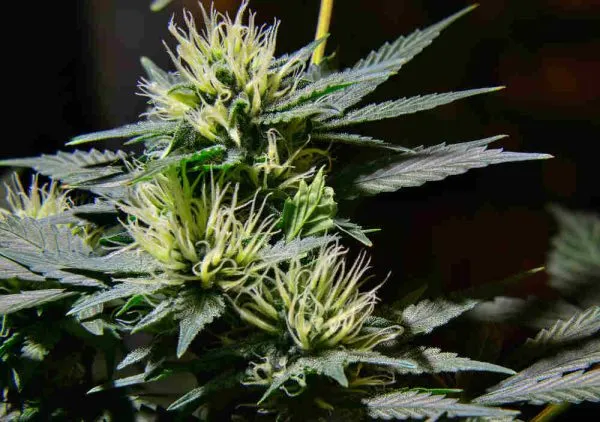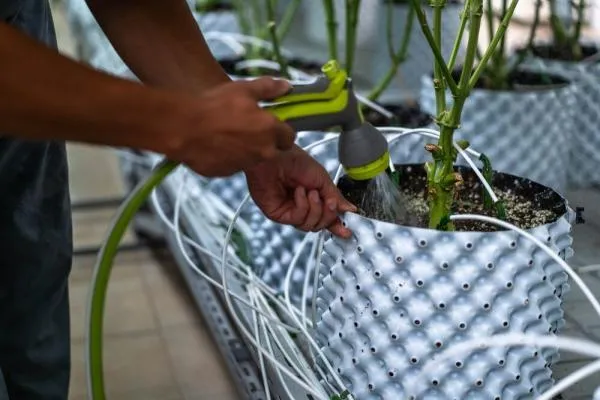There is perhaps nothing more disappointing to an eager cannabis grower than discovering that there is a male plant in the garden. Doubly so if you have a small garden or just one plant. More experienced gardeners will have this issue under control, however if you have some mystery seeds or aren’t sure whether they are feminized cannabis seeds, you are highly likely to encounter the problem of male plants appearing alongside your females. Plants won’t fully reveal their sex until the flowering stage, which may be too late for some, though there are ways to identify plant sex. So how do you tell if your plant is male or female before flowering? Keep reading to find out how to learn about the birds and the bees of cannabis and how to tell whether you have any male intruders in your garden.
- Male vs female weed plants: What is the difference?
- When can you tell if your plant is male or female?
- What are the early signs of a male plant?
- What are the early signs of a female plant?
- How long do male and female plants take to flower?
- Do male plants have white pistils?
- What should you do if you find a male cannabis plant?
Male vs female weed plants: What is the difference?
Cannabis seeds can grow into male or female plants so it's important to understand the difference between the two before you start growing. Marijuana is for the most part a dioecious plant, which means that individual plants will have a mix of male and female plants in a garden or patch. The male plants produce flowers containing pollen sacs. Once these sacs burst, they spread their pollen throughout the garden with the aim of getting into as many female flowers to produce offspring (seeds) for the next spring. This is the case for the vast majority of commercially available marijuana seeds. There are a few varieties of monoecious cannabis varieties, which contain both male and female reproductive organs on the same plant. In other words, they are naturally hermaphroditic. However, these varieties are used almost exclusively for industrial hemp and not for growing those big, fat, juicy buds most growers are after. To harvest those salacious buds, growers look to cultivate exclusively female plants, aka ‘sinsemilla’ (Spanish for ‘without seed’) as they produce the highest amounts of THC as well as bulky flowers, unlike their male counterparts, which will contain much less THC and for the most part have smaller yields.
What are male cannabis plants?
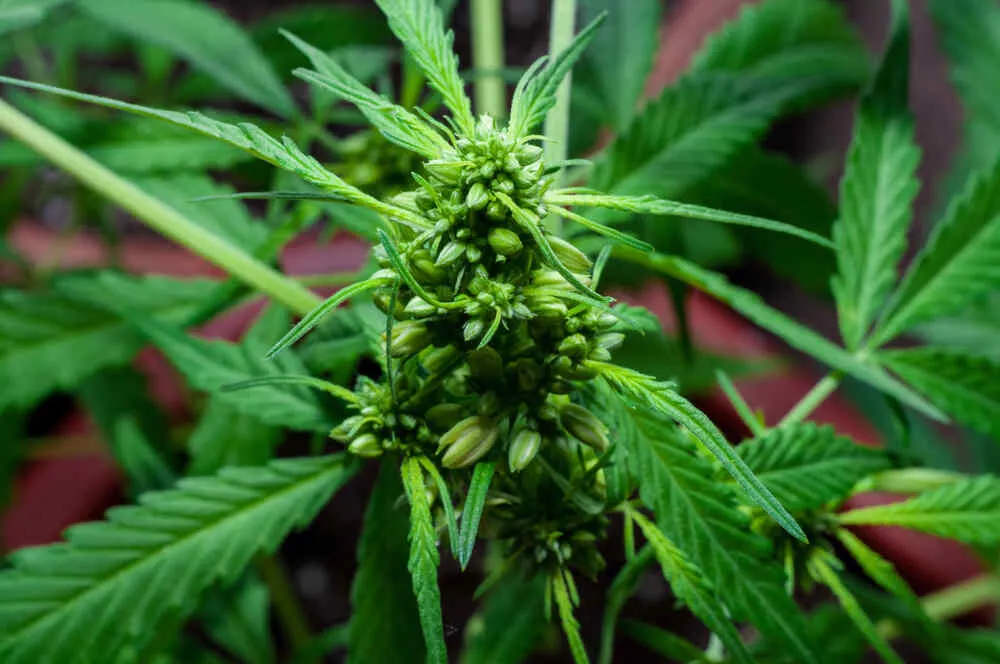
Male plants originally start out like female plants in the seedling stage, though once you know their traits, identifying them is quite easy. In later stages of growth, males tend to be smaller than females, which is one characteristic to watch out for. Male flowers are quite distinct from female flowers in that their buds look like tiny little sacs or banana bunches hanging from thin stems. Once the flower ripens, the head of these sacs turn upwards and appear upright. Five yellowish or cream-colored petals emerge. In the middle you have a stamen that releases pollen to be carried by the wind to female plants for seed production.
What are female cannabis plants?
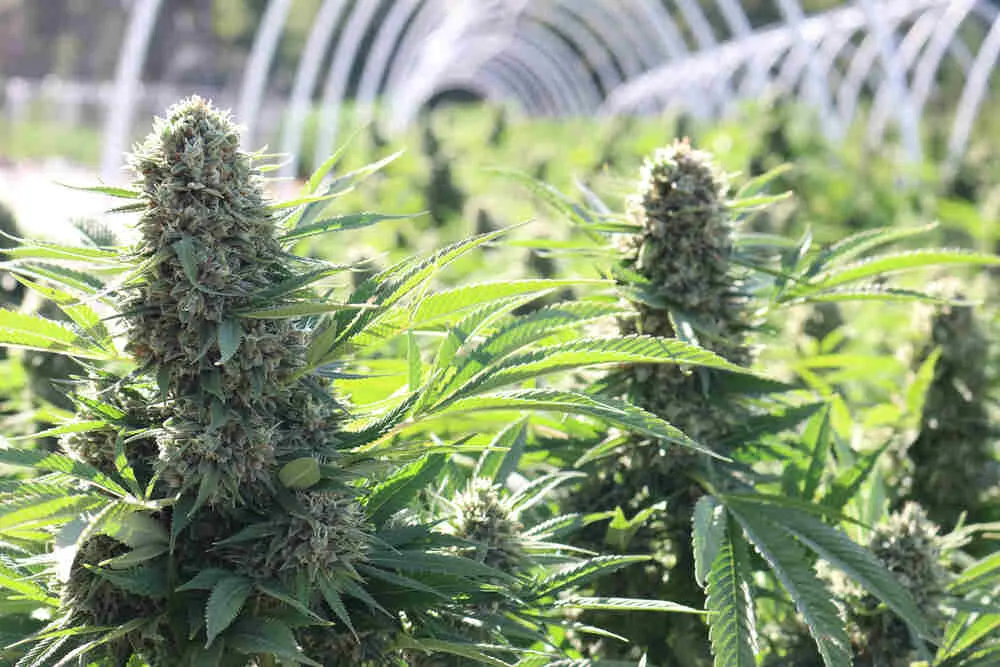
Female plants are easily identified when in full maturity by the presence of big, fat, very aromatic flowers, and, depending on the strain, an array of colors on the leaves and buds. They also tend to grow taller than males in later stages of growth, specifically flowering. A clear sign you are dealing with a female plant is the presence of pistils and stigmas, or protrusions resembling antennas that can range in color from white to lush pink. The stigmas are the ones that male pollen attaches to, after which the pollen makes its way to the ovaries and fertilization takes place to begin the seed formation process.
What is the benefit of growing with feminized seeds?
Feminized seeds are preferred by many growers as they are 99% likely to produce female flowers. This means that growers sowing such seeds for the most part do not have to worry about sexing (identifying plant gender) their garden. Depending on the circumstances, such as high levels of stress, female plants may turn hermaphroditic (containing both male and female sexual organs) if they realize there are no males in the area and their life cycle is coming to an end, though this doesn’t happen very often. Another benefit of using feminized seeds is you end up wasting fewer seeds. With regular seeds, the chances of getting a male in your garden is 50/50, which means you have to germinate twice the number of seeds to get the desired number of female plants.
When can you tell if your plant is male or female?
The sexual characteristics of both male and female plants become more and more obvious as the plant matures, though males tend to display their traits a little sooner than females. There are two main ways of determining the sex of your plant. One is the traditional method of taking a magnifying glass and having a close look at your plants. A couple of weeks into the vegetative phase, usually during week 3-6 from seed, your plants will begin to show signs of their sex. You need to have a close look at the plant nodes where the leaf petioles meet the stem. You may notice a small male pollen sac or a pistil. The entire plant will have the same sex as this individual flower, so it’s a sign as to whether to keep it or not. A more effective way is to induce early flowering. Of course, you don’t want to do this to the entire plant, let alone the whole garden, so one trick is to take a cutting from each plant and place it in a small container with a growing medium under a 12/12 light schedule. Plants should display their sex within 10 days.
What are the early signs of a male plant?
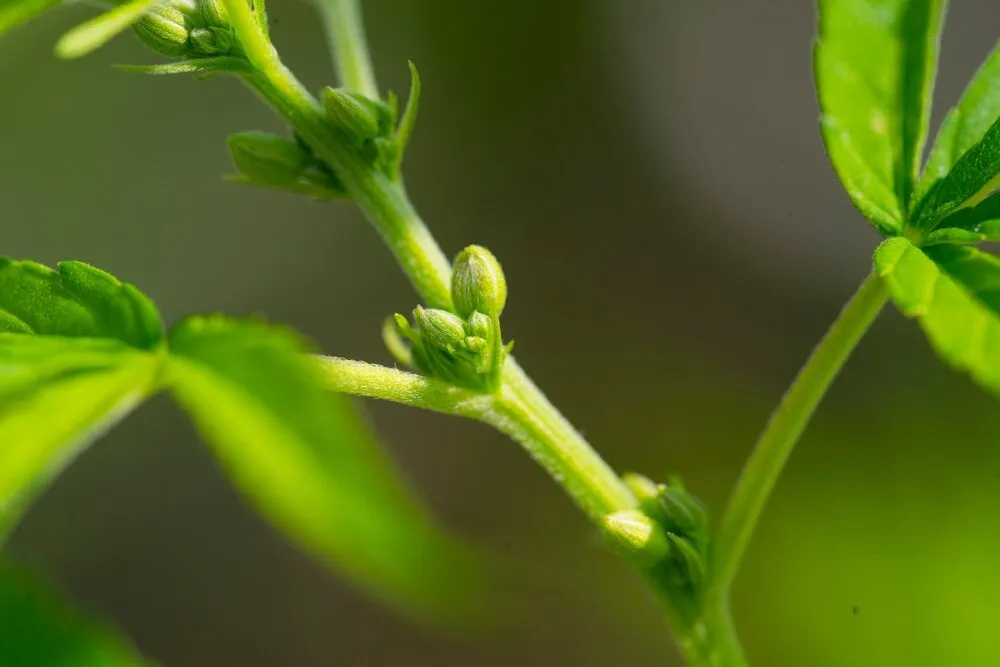
As mentioned earlier, male plants will tend to display little pollen sacs resembling tiny banana bunches at its nodes early on. This is referred to as the pre-flower. If you notice small, ball-like structures, resembling bunches with tiny individual grape-like formations, you have an immature pollen sac.
Can you spot the early signs of a male plant during veg?
So, what are the early signs of a male plant in veg? Pre-flowers should be visible by week 6 when starting from seed, though some may display early signs of being a male plant as early as week 3, so you need to regularly check up on your garden at this stage. Male plants also generally display their sexual traits a little sooner than females.
What does a male plant look like when it starts to bud?
When they start to bud, male pre-flowers will develop small structures resembling banana bunches. As they ripen, they will increase in size and eventually turn upright, revealing cream/yellow-colored petals, which can be seen even without a magnifying glass.
What are the early signs of a female plant?
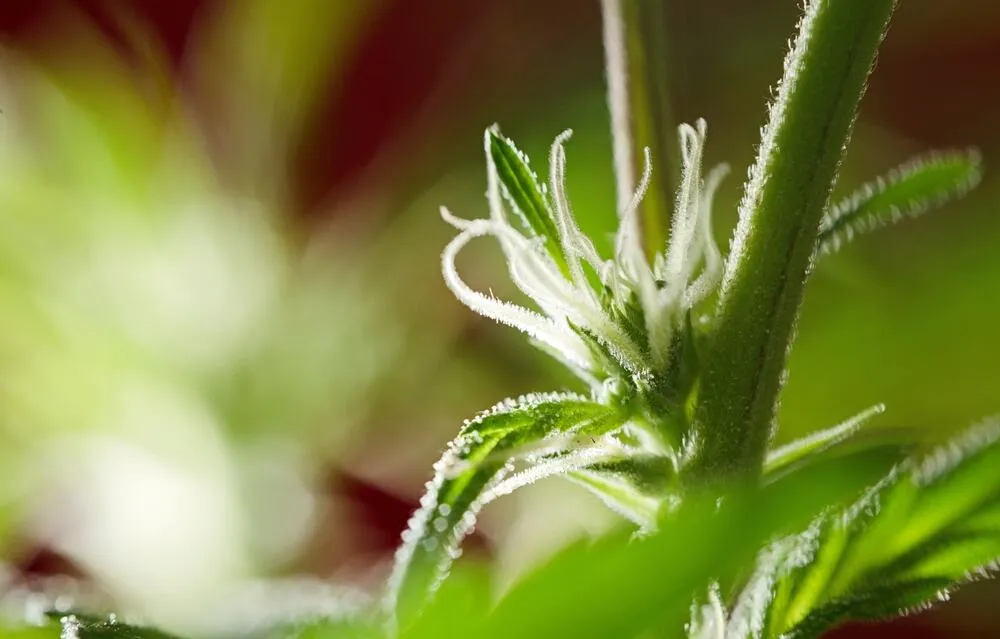
Now that we know what to look for in a male, let’s take a look at the early signs of a female plant. The earliest tell-tale sign of a female cannabis plant is of course the unmistakable white pistil, which looks like a whisker protruding from the plant node. Female pre-flowers, specifically the calyx, can initially resemble an immature male pollen sac, though within a few days a small whisker-like pistil will begin to take shape.
Can you spot the early signs of a female plant during veg?
The earliest time a female plant will start to display her sex is in the vegetative well before flowering. Females produce little bracts from which white whiskers or hair-like structures start to emerge. As the plant progresses into flowering, these bracts become more visible and pronounced.
What does a female plant look like when it starts to bud?
Female pre-flowers will have small pistils that can resemble immature male pollen sacs, but they then quickly develop unmistakable white pistils that can develop stigmas with different colors, though most tend to be white. There will be more and more stigmas developing at the node which will eventually become bud sites.
How long do male and female plants take to flower?
Depending on the strain (sativa, indica or autoflower), female plants can take anywhere from as little as 7 up to 12 weeks to fully flower. This of course depends on the light cycle if you are growing photoperiod seeds, shorter if you are growing autoflowers. Pollinated cannabis flowers will finish sooner than unpollinated sinsemilla ones as the latter will continue to grow and ripen as they await male pollen to reproduce, many times in vain, which is what growers are after.
Do male plants have white pistils?
No, male plants do not contain any pistils whatsoever. Early on, immature male pollen sacs may be mistaken for female calyxes and vice-versa, though by week 6 from seed, this should become identifiable. Hermaphrodite plants on the other hand will display both male and female characteristics, including pistils.
What should you do if you find a male cannabis plant?
This depends on what you intend to do with your harvest. If you are growing for THC-laden buds, male plants should be removed as soon as they are identified. If a female becomes pollinated, her energy will mostly focus on seed production, meaning yields will be smaller and THC content will also be reduced. Many growers think they have taken all the right steps to find themselves wondering why their female plant is producing seeds. Often times they will notice males once it’s a little too late. When pollen sacs have turned upright and have opened, they will have released their pollen into the air, often times leaving behind what looks like white dust on a nearby leaf. At this point it is a little too late to save the females, though not all is lost as you can still use the flowers, though you will find yourself picking out seeds from buds. Smoking seeds is not recommended as they can produce a very unpleasant smoke.
